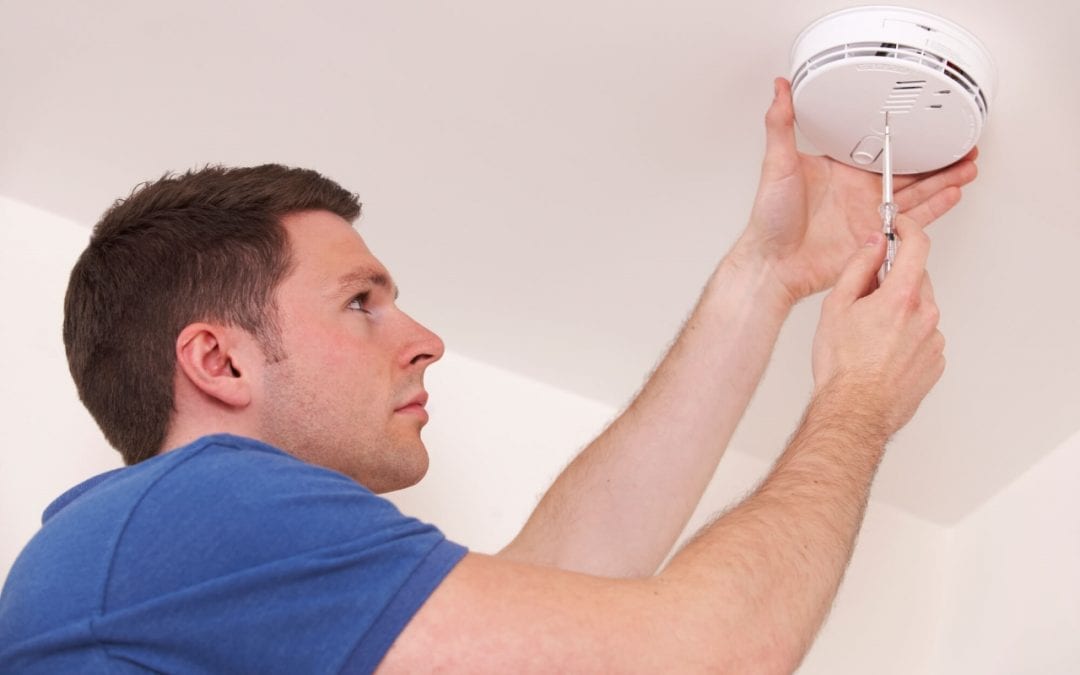All homes and apartments should have smoke detectors. While it’s unlikely that you’ll experience a fire in your home, it’s important to be prepared. By following the best practices for smoke detector placement, you will make your home safer for your family.
What to Consider for Smoke Detector Placement
Proper smoke detector placement goes beyond simply placing smoke detectors around the house. How many detectors you have and where they are positioned matters. Read on for 4 tips to use when installing smoke detectors.
1. The Best Places for Smoke Detectors
Smoke detectors are most effective when you choose the correct smoke detector placement. Your smoke detectors should be in an area where they can sense smoke quickly. Since most fatal fires happen when people are asleep, it’s important to have one in each bedroom and a smoke detector in the hallway outside of bedrooms.
When placing smoke detectors in the kitchen, keep them ten feet away from the stove to prevent false alarms. Smoke detectors should go on the ceiling, or if that’s not possible, 4-12 inches away from the ceiling.
2. Types of Detectors
When planning for smoke detector placement, it’s important to know the type of smoke detectors you’re using. The three types of smoke detectors you can choose from are an ionization detector, photoelectric detector, and a dual-sensor detector that is a combination of both. Ionization detectors quickly detect fires with high flames, like grease fires, while photoelectric detectors are better sensing smoldering fires, like a fire that starts from a lit cigarette.
Experts recommend that homeowners choose a dual-sensor detector. It’s impossible to determine what might start a fire, so it’s better to invest in a smoke detector that will give you an alert for any type of fire.
3. Provide Proper Maintenance
In addition to choosing the correct smoke detector for your home, you should also perform regular maintenance. While most homeowners install their detectors and forget about them, they need to be tested and have their batteries replaced. When detectors start chirping, it’s a sign that the batteries need to be changed. Even if there are no chirping noises, replace the batteries at least once a year.
4. Install Carbon Monoxide Alarms
Just as it is essential to install smoke detectors to protect yourself from fire, carbon monoxide alarms are also necessary. CO is a deadly gas that is undetectable without a detection device. CO detectors should be installed in bedrooms, kitchens, and anywhere else there is a gas-powered appliance. Because CO is generated by a car engine, install a CO detector in the garage.
Smoke Detector Placement is Important
Don’t neglect proper smoke or CO detector placement. These essential tools will alert your family to the first sign of danger. Keep these tips in mind and be ready for any scenario.
Homespec serves North Mississippi and Southwest Tennessee with home inspection services. Contact us to schedule an inspection.

